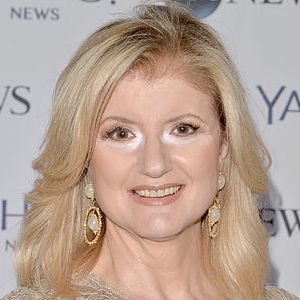Want to know what books Victor Asemota recommends on their reading list? We've researched interviews, social media posts, podcasts, and articles to build a comprehensive list of Victor Asemota's favorite book recommendations of all time.
1

In this stunning new book, Malcolm Gladwell takes us on an intellectual journey through the world of "outliers"--the best and the brightest, the most famous and the most successful. He asks the question: what makes high-achievers different?
His answer is that we pay too much attention to what successful people are like, and too little attention to where they are from: that is, their culture, their family, their generation, and the idiosyncratic experiences of their upbringing. Along the way he explains the secrets of software billionaires, what it takes to be a great soccer player,... more In this stunning new book, Malcolm Gladwell takes us on an intellectual journey through the world of "outliers"--the best and the brightest, the most famous and the most successful. He asks the question: what makes high-achievers different?
His answer is that we pay too much attention to what successful people are like, and too little attention to where they are from: that is, their culture, their family, their generation, and the idiosyncratic experiences of their upbringing. Along the way he explains the secrets of software billionaires, what it takes to be a great soccer player, why Asians are good at math, and what made the Beatles the greatest rock band. less 
James AltucherGladwell is not the first person to come up with the 10,000 hour rule. Nor is he the first person to document what it takes to become the best in the world at something.
But his stories are so great as he explains these deep concepts.
How did the Beatles become the best? Why are professional hockey players born in January, February and March?
And so on. (Source)

Victor AsemotaDo you want to work very hard to be the best or do you want to work barely enough to be lucky? Those are the questions I asked myself as I read Malcolm Gladwell's book - Outliers. I have seen that the hardworking people who know their craft are almost always successful. (Source)
2

The New York Times bestselling authors of Switch and Made to Stick explore why certain brief experiences can jolt us and elevate us and change us—and how we can learn to create such extraordinary moments in our life and work.
While human lives are endlessly variable, our most memorable positive moments are dominated by four elements: elevation, insight, pride, and connection. If we embrace these elements, we can conjure more moments that matter. What if a teacher could design a lesson that he knew his students would remember twenty years later?... more The New York Times bestselling authors of Switch and Made to Stick explore why certain brief experiences can jolt us and elevate us and change us—and how we can learn to create such extraordinary moments in our life and work.
While human lives are endlessly variable, our most memorable positive moments are dominated by four elements: elevation, insight, pride, and connection. If we embrace these elements, we can conjure more moments that matter. What if a teacher could design a lesson that he knew his students would remember twenty years later? What if a manager knew how to create an experience that would delight customers? What if you had a better sense of how to create memories that matter for your children?
This book delves into some fascinating mysteries of experience: Why we tend to remember the best or worst moment of an experience, as well as the last moment, and forget the rest. Why “we feel most comfortable when things are certain, but we feel most alive when they’re not.” And why our most cherished memories are clustered into a brief period during our youth.
Readers discover how brief experiences can change lives, such as the experiment in which two strangers meet in a room, and forty-five minutes later, they leave as best friends. (What happens in that time?) Or the tale of the world’s youngest female billionaire, who credits her resilience to something her father asked the family at the dinner table. (What was that simple question?)
Many of the defining moments in our lives are the result of accident or luck—but why would we leave our most meaningful, memorable moments to chance when we can create them? The Power of Moments shows us how to be the author of richer experiences. less 
Angela DuckworthI read this cover to cover and learned something new on each page. Beautifully written, brilliantly researched--I'm recommending it to everyone I know! (Source)

Eric RiesWhat if we could design experiences that have real impact for our families, our customers and employees? Master storytellers Chip and Dan Heath show how. (Source)

Adam GrantThe most interesting, immediately actionable book I’ve read in quite a while. I walked away with new ideas for motivating employees, delighting customers, engaging students, and even planning family vacations. If life is a series of moments, the Heath brothers have transformed how I plan to spend mine. (Source)
3

Clayton M. Christensen, the author of such business classics as The Innovator’s Dilemma and the New York Times bestseller How Will You Measure Your Life, and co-authors Efosa Ojomo and Karen Dillon reveal why so many investments in economic development fail to generate sustainable prosperity, and offers a groundbreaking solution for true and lasting change.
Global poverty is one of the world’s most vexing problems. For decades, we’ve assumed smart, well-intentioned people will eventually be able to change the economic trajectory of poor countries. From... more Clayton M. Christensen, the author of such business classics as The Innovator’s Dilemma and the New York Times bestseller How Will You Measure Your Life, and co-authors Efosa Ojomo and Karen Dillon reveal why so many investments in economic development fail to generate sustainable prosperity, and offers a groundbreaking solution for true and lasting change.
Global poverty is one of the world’s most vexing problems. For decades, we’ve assumed smart, well-intentioned people will eventually be able to change the economic trajectory of poor countries. From education to healthcare, infrastructure to eradicating corruption, too many solutions rely on trial and error. Essentially, the plan is often to identify areas that need help, flood them with resources, and hope to see change over time.
But hope is not an effective strategy.
Clayton M. Christensen and his co-authors reveal a paradox at the heart of our approach to solving poverty. While noble, our current solutions are not producing consistent results, and in some cases, have exacerbated the problem. At least twenty countries that have received billions of dollars’ worth of aid are poorer now.
Applying the rigorous and theory-driven analysis he is known for, Christensen suggests a better way. The right kind of innovation not only builds companies—but also builds countries. The Prosperity Paradox identifies the limits of common economic development models, which tend to be top-down efforts, and offers a new framework for economic growth based on entrepreneurship and market-creating innovation. Christensen, Ojomo, and Dillon use successful examples from America’s own economic development, including Ford, Eastman Kodak, and Singer Sewing Machines, and shows how similar models have worked in other regions such as Japan, South Korea, Nigeria, Rwanda, India, Argentina, and Mexico.
The ideas in this book will help companies desperate for real, long-term growth see actual, sustainable progress where they’ve failed before. But The Prosperity Paradox is more than a business book; it is a call to action for anyone who wants a fresh take for making the world a better and more prosperous place. less 
Eric SchmidtClayton Christensen's latest book The Prosperity Paradox is a must-read. Powerful, persuasive, andwonderfully written, Christensen and his coauthors make a compelling case for the game-changing roleof innovation in some of the world's most desperate economies. (Source)

Arianna HuffingtonThe Prosperity Paradox has the power to transform our thinking about philanthropy and social good. Aswe continue to grapple with how to lift people out of poverty, Clay Christensen, Efosa Ojomo and KarenDillon provide a new and innovative solution for millions of people around the world. It's a must-readfor anyone with an interest in global affairs who wants to create a truly thriving society. (Source)

Steve CaseThe rise of any economy, local or global, must be fueled by innovative entrepreneurs willing to buildnew markets. With The Prosperity Paradox, Christensen, Ojomo, and Dillon offer powerful insight andguidance on how we can channel our efforts to create jobs, generate growth, and impact individual livesall over the world. (Source)
4

What do James Bond and Lipitor have in common? What can we learn about human nature and world history from a glass of water?
In Loonshots, physicist and entrepreneur Safi Bahcall reveals a surprising new way of thinking about the mysteries of group behavior that challenges everything we thought we knew about nurturing radical breakthroughs.
Drawing on the science of phase transitions, Bahcall shows why teams, companies, or any group with a mission will suddenly change from embracing wild new ideas to rigidly rejecting them, just as flowing water will... more What do James Bond and Lipitor have in common? What can we learn about human nature and world history from a glass of water?
In Loonshots, physicist and entrepreneur Safi Bahcall reveals a surprising new way of thinking about the mysteries of group behavior that challenges everything we thought we knew about nurturing radical breakthroughs.
Drawing on the science of phase transitions, Bahcall shows why teams, companies, or any group with a mission will suddenly change from embracing wild new ideas to rigidly rejecting them, just as flowing water will suddenly change into brittle ice. Mountains of print have been written about culture. Loonshots identifies the small shifts in structure that control this transition, the same way that temperature controls the change from water to ice.
Using examples that range from the spread of fires in forests to the hunt for terrorists online, and stories of thieves and geniuses and kings, Bahcall shows how this new kind of science helps us understand the behavior of companies and the fate of empires. Loonshots distills these insights into lessons for creatives, entrepreneurs, and visionaries everywhere. less 
Daniel KahnemanThis book has everything: new ideas, bold insights, entertaining history and convincing analysis. Not to be missed by anyone who wants to understand how ideas change the world. (Source)

Timothy FerrissIt really is [a damn good book]. So I encourage people, loonshots.com, take a look at the book. And if you’re like, “I still need to be sold,” okay. Go read up on Safi and you’ll be like, “Okay, there are probably additional things that I could learn from Safi and from the historical examples that you weave together, right?” It’s really the way that I like to learn personally and I think it’s the... (Source)

Siddhartha MukherjeeA wonderful book that explores the beauty, quirkiness and complexity of ideas, Loonshots will both educate and entertain you. If you care about ideas—especially new and out-of-the-box ones—you need to read this book. (Source)
5

Our innovation economy is broken. But there's good news: The ideas that will solve our problems are hiding in plain sight.
While big companies in the American economy have never been more successful, entrepreneurial activity is near a 30-year low. More businesses are dying than starting every day. Investors continue to dump billions of dollars into photo-sharing apps and food-delivery services, solving problems for only a wealthy sliver of the world's population, while challenges in health, food security, and education grow more serious.
In The... more Our innovation economy is broken. But there's good news: The ideas that will solve our problems are hiding in plain sight.
While big companies in the American economy have never been more successful, entrepreneurial activity is near a 30-year low. More businesses are dying than starting every day. Investors continue to dump billions of dollars into photo-sharing apps and food-delivery services, solving problems for only a wealthy sliver of the world's population, while challenges in health, food security, and education grow more serious.
In The Innovation Blind Spot, entrepreneur and venture capitalist Ross Baird argues that the innovations that truly matter don't see the light of day--for reasons entirely of our own making. A handful of people in a handful of cities are deciding, behind closed doors, which entrepreneurs get a shot to succeed. And most investors are what Baird calls "two-pocket thinkers"--artificially separating their charitable work from their day job of making a profit.
The resulting system creates rising income inequality, stifled entrepreneurial ambition, social distrust, and political uncertainty. Our innovation problem makes all our other problems harder to solve. In this book, Baird demonstrates how and where to find better ideas by lifting up people, places, and industries that are often overlooked. What's more, Baird ultimately outlines how to create long-term success through "one-pocket thinking"--eliminating the blind spot that separates "what we do for a living" and "what we really care about." less 
Victor AsemotaI honestly think most US VC should read @rossbaird’s book on “Innovation Blindspots”. This was a great response to another tweet below. If it is just about picking then ML will make VC obsolete quickly. https://t.co/P1iZ381NO2 (Source)
Don't have time to read Victor Asemota's favorite books? Read Shortform summaries.
Shortform summaries help you learn 10x faster by:
- Being comprehensive: you learn the most important points in the book
- Cutting out the fluff: you focus your time on what's important to know
- Interactive exercises: apply the book's ideas to your own life with our educators' guidance.




